Concurrent Session 2 | May 6 | 11:30 – 1:00 PM
Session 2.1
NEPA | NEPA in the Digital Age
11:30 – 1:00 PM
| About the Presentation |
|
Despite technology advancements transforming various industries within environment, energy, and infrastructure, and record levels of federal investment under the Infrastructure Investment and Jobs Act (IIJA), the NEPA process has clung to outdated paper and PDF-based processes for over four decades. Concerned at the slow pace of technological adoption by project sponsors and NEPA practitioners, Congress acted in the recently passed Fiscal Responsibility Act to direct the White House to study the potential for a digital transformation of the NEPA process. Environmental Impact Statements, once concise at 10 pages, now swell to an average of 600 pages, with appendices exceeding 1,000 pages; creating significant barriers to stakeholder understanding and engagement. The repercussions can be substantial, resulting in misunderstandings about the nature and effects of projects, causing permitting delays that impede project progression, endanger critical infrastructure development, and jeopardize potential grant funding. Recent NEPA legislation strives to address these challenges, setting a target of a 2-year review period and introducing ongoing Congressional considerations for new legislation to endorse the adoption of digital tools and practices. Confronted with environmental permits dragging on for up to seven years, the question arises: How can we achieve a two-year timeline without compromising essential environmental, social, and economic safeguards? To unravel this complexity, we must first dissect the root causes of these extensive delays, pinpointing whether they stem from process inefficiencies or data challenges. Discover how tackling the data problem can serve as a pivotal gateway to resolving some of the most pressing process obstacles, paving the way for a streamlined and efficient digital NEPA process.
In this panel presentation, we will explore:
- How the new legislative requirements and administrative actions are paving the way for the adoption of digital solutions, including new NEPA legislation that is currently being considered by Congress
- Key factors that pose hurdles to efficient and inclusive NEPA processes and approvals
- Digital solutions that streamline the NEPA process by unifying data, strengthening stakeholder collaboration, and creating more inclusive public engagement
- Digital NEPA best practices and case study examples
|
| About the Speakers |
|
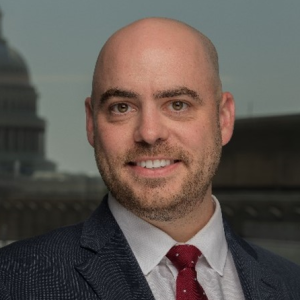 Harrison M. Wadsworth IV Harrison M. Wadsworth IV
Vice President, Government Relations
AECOM
Harrison Wadsworth is the Vice President of Government Relations at AECOM. In his role, he leads the company's approach to federal, state, and local governments on infrastructure development topics in support of AECOM's mission to deliver a better world. Leveraging his 15 years of expertise in government relations, Harrison proactively influences legislation and government policy across market sectors such as transportation, water, energy, environment, operations, and digital technology. Harrison is known as a trusted advisor to senior leaders in the U.S. Congress, Administration, and numerous trade and business associations throughout Washington, DC, and beyond.
|
|
 Catherine Clark Catherine Clark
Environmental Planner
AECOM
Catherine Clark is an Environmental Planner for AECOM with 15 years of experience. She specializes in NEPA and state-level environmental compliance and public outreach for transportation projects throughout California. Catherine often works on projects from planning through construction and understands the deep personal connection people have with public infrastructure. She helps her clients successfully complete projects by writing legally defensible, intelligible documents and engaging with the public frequently and meaningfully.
|
|
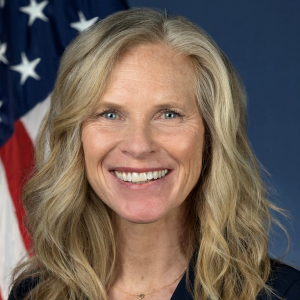 Laynee Jones Laynee Jones
Environmental Specialist
United States Department of Transportation
Laynee Jones (US DOT) - Laynee Jones works for the United States Department of Transportation in the Office of the Secretary. In her role, Laynee provides advice and expertise on regulatory proposals and environmental policy, leads the Modernizing NEPA effort for the Department, authored a Report to Congress on DOT NEPA progress, and plays a key role in the management of the Permitting Dashboard. Prior to coming to the US DOT, Laynee worked in national consulting organizations, mainly leading the planning and environmental process for transportation projects. She is focused on bringing digital innovation into the NEPA process.
|
|
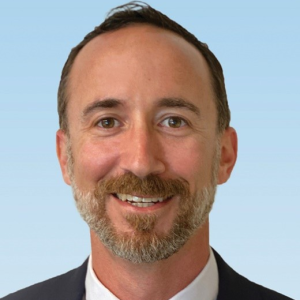 Michael Drummond Michael Drummond
Director for Permitting and Innovation
Council on Environmental Quality (CEQ)
Michael Drummond serves as Director for Permitting and Innovation at the Council on Environmental Quality (CEQ) where he leads efforts to improve the efficiency and effectiveness of environmental review and permitting processes. Prior to joining CEQ Michael served as an Attorney-Advisor with the U.S. Department of Transportation’s (DOT) Office of General Counsel. Michael previously served at CEQ from 2013 - 2020. During his time at CEQ Michael helped draft the first comprehensive update to CEQ’s NEPA implementing regulations in over forty years and led the development of the first government-wide reports on EIS timelines and page counts. Michael holds a B.A. from the Evergreen State College and J.D. from the University of Washington School of Law.
|
Back to Top
Session 2.2
Biological Resources | Biological Resources Working Group's Regulatory Update- MBTA, ESA, BGEPA, and More
11:30 – 1:00 PM
| About the Presentation |
|
The Biological Working Group tracks changes in regulations and case laws surrounding laws such as the Endangered Species Act, Migratory Bird Treaty Act, Magnuson-Stevens Conservation and Management Act, Marine Mammal Protection Act, and Bald and Golden Eagle Protection Act, among others. This session will provide regulatory and case-law updates to what our team thinks are the most significant shifts that impact the environmental profession. Our presenters will provide insight into how these changes will affect the analysis and implementation of these statutes. Our discussion will include the following four topics:1) Mike Mayer, HDR, will start this session by providing a review of case law related to these statutes.2) Local United States Fish and Wildlife Service biologist Jill Utrup will provide a regulatory update, including new species listings, with an emphasis on several bat species.3) Clint Miller, The Conservation Fund, will provide an overview of natural resource compensatory and voluntary mitigation methods used in the Midwest.4) Discuss the latest technologies for avoiding and minimizing avian and bat mortality at wind power projects with Molly Stephenson.
The objective of this session includes the following:
- Provide timely and relevant information to the NAEP members
- Provide the highlights of the Biological Resources Working Group's regulatory updates from the year
- Provide awareness of the Biological Resources Working Group and grow our participation
|
| About the Speaker(s) |
|
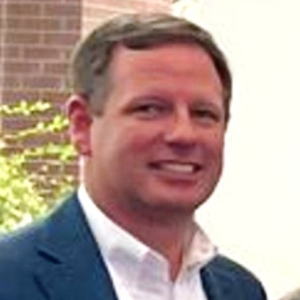 Mark Mohr Mark Mohr
Senior Environmental Planner
CDM Smith, Inc.
Mark is a Senior Environmental Planner with CDM Smith Inc, a privately owned engineering firm that provides legendary client service and smart solutions in water, environment, transportation, energy, and facilities. He has over 23 years of experience in the natural resource conservation and NEPA compliance field, and has led the development of NEPA analysis, natural resource assessments, and wetland permits throughout the Carolinas. Mark is a graduate of the University of SC and Central Carolina Tech with degrees in both business and natural resource management. He is also an active board member of the NAEP-SC chapter and serves on the NAEP board as the Chapter Representative for SC.
|

Michael Mayer
Senior Environmental Planning Lead
HDR, Inc.
Mike, a senior environmental planning lead with HDR, has over 20 years of experience working on federal, state, and private client projects related to energy, natural resource management, and mining. Michael uses his unique training as both a biologist and a lawyer to address resource issues in a scientifically and legally defensible manner. With his training, he is able to navigate the myriad of regulatory requirements applying ecological knowledge to planning and compliance efforts, navigating natural resource laws such as the Endangered Species Act and Migratory Bird Treaty Act. Michael is the current Vice President of the NAEP and the Minnesota AEP.
|
|
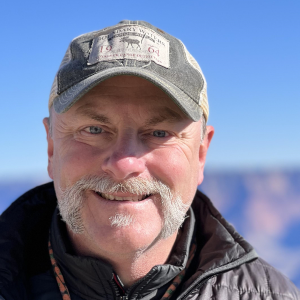 Clint Miller, M.S., CWB Clint Miller, M.S., CWB
Central Midwest Regional Director
The Conservation Fund
Clint is the Central Midwest Regional Director for the Conservation Fund, overseeing the Fund’s work in Nebraska, Missouri, Iowa and Kansas as well as working in Wisconsin, Michigan, North and South Dakota. He is the Fund’s lead on implementation of the Midwest Habitat Mitigation Project, a $22 million compensatory mitigation program for a 600-mile oil pipeline running across four states. He is a recognized expert negotiator and facilitator, working with federal, state and local agencies, corporations, and families on complex real estate transactions, conservation easements, mitigation, public and private funding and finance.
|
|
 Molly Stephenson, M.S., Wildlife Ecology Molly Stephenson, M.S., Wildlife Ecology
Senior Biologist
TerraForm Power
Molly is a Senior Biologist at TerraForm Power, where she manages wildlife-related issues at their 15 operational wind farms. She previously spent 10 years in consulting, managing wildlife surveys at over 100 proposed or operational wind farms across 11 states, and providing guidance on compliance with the ESA, BGEPA, and the MBTA. She has led the development of 10 Habitat Conservation Plans for wind and bats and 4 Eagle Conservation Plans. Molly currently manages the implementation of four HCPs, oversees an internal Downed Wildlife Observation program, and provides internal guidance related to wind-wildlife issues.
|
|
 Jill Utrup, M.S. Jill Utrup, M.S.
Fish and Wildlife Biologist
US Fish and Wildlife Service
Jill has been with the U.S. Fish and Wildlife Service for the last 17+ years and is currently stationed in the Minnesota/Wisconsin Field Office of the U.S. Fish and Wildlife Service based in Bloomington, Minnesota. She predominately works on federally endangered and threatened species recovery, listing, and consultation, and is the national lead for the northern long-eared bat. She works closely with a wide variety of partners not only in Minnesota and Wisconsin, but also nationally to promote conservation and recovery actions for listed bats and other species. Outside of work, Jill enjoys continuing to add to her many “pocket prairies,” along with exploring new parks and natural spaces with her family.
|
| |
Back to Top
Session 2.3 A
Waste | Waste Minimization: Challenges and Best Practices in Minnesota
11:30 – 12:00 PM
| About the Presentation |
|
Minnesota is one of the largest and most economically diverse states in the Midwest, driven by agribusiness, manufacturing, and forestry, among other industries. While the Minneapolis-St. Paul region is the primary commercial hub, industry can be found throughout the state. Where there is industry, there is a need to manage the associated by-products and wastes - but many of these industries are in rural areas, away from population centers. So how can businesses cost-effectively manage their wastes while protecting Minnesota's natural resources? A growing population means a growing volume of waste and a need for innovative strategies for waste management. Instead of managing the wastes as they are generated, businesses are often able to minimize or eliminate the wastes at their source, often with the support of grant-funded state and federal resources. Using the EPA's waste management hierarchy as a guide, businesses of all sizes and natures can then work to reuse or repurpose what remains. This session will cover common challenges to waste minimization in companies of all sizes, as well as the current and future waste diversion opportunities and emphasis areas for waste minimization in Minnesota.
Examples of waste minimization strategies and opportunities in Minnesota businesses, including regulatory updates related to waste reduction and pollution prevention, will also be presented and include the following:
- Food systems are critical to Minnesota's economy and its almost 6 million residents, and the EPA estimates that food waste comprises 58% of methane emissions from landfills nationwide. However, opportunities are growing for anaerobic digestion of food waste and upcycling of ingredients that would otherwise become waste.
- Emerging chemicals present both an opportunity for hazardous waste reduction and a potential cause for caution. Minnesota enacted a ban on trichloroethylene (TCE) use in 2020, and in October 2023, the EPA proposed a similar ban nationwide, which could lead to use of safer, non-carcinogenic chemicals.
- Recent droughts in Minnesota have strained municipal water supplies, and some residents have been asked to cut back on unnecessary water use to ensure that farmers have access to water. Industrial water conservation can be performed cost-effectively without regulatory involvement, and reduction of high-strength waste loading to wastewater can ease the burden on municipal treatment plants and maintain downstream water quality.
Case studies of cost and resource savings associated with waste minimization will also be provided.
Objectives:
- Discuss opportunities and common challenges associated with waste minimization in Minnesota
- Educate the audience about the growing need for waste minimization
- Provide applicable case studies and examples such that non-Minnesotans can learn waste-minimization strategies
- Emphasize the financial and resource savings associated with pollution prevention, via examples and case studies
|
| About the Speaker |
|
 Kevin Philpy Kevin Philpy
Senior Engineer
Minnesota Technical Assistance Program
Kevin Philpy is a senior engineer with the Minnesota Technical Assistance Program (MnTAP), where he provides waste minimization and water conservation support for businesses and organizations in Minnesota. His experience as an environmental manager and consultant includes pollution prevention; environmental compliance, due diligence, and permitting; litigation support; and soil and groundwater investigation and remediation. His career has included on-site environmental assessments or investigations in numerous industries across twenty-six states. Kevin is an environmental professional as defined by the AAI final rule and holds a B.S. in civil engineering and an M.S. in environmental engineering, both from Johns Hopkins University.
|
Session 2.3 B
Waste | Measuring Effectiveness of Hardrock Abandoned Mine Land Remediation for Surface Waters
12:00 – 12:30 PM
| About the Presentation |
|
The state of Arizona does not have a formal hardrock abandoned mine land (AML) program and therefore no specific funding to address this widespread problem. According to USGS data, Arizona is #4 in the nation for AML features with various features impacting public safety, public health, and the environment. More than 1300 of these features are within 2 miles of currently impaired surface waters as defined by the federal Clean Water Act. Heavy metals are one of the top impairments in the state. To mitigate the impact of heavy metals from AMLs in surface waters, the Arizona Department of Environmental Quality (ADEQ) is implementing remediation with a patchwork of available funding and through various Sections within the agency in collaboration with industry, private landowners, and federal and state agencies. This work has led to a reduction of heavy metals in multiple streams in Arizona. Some of these streams are no longer impaired for heavy metals. ADEQ and their partners have completed this work through the application of various technology and methods associated with AML remediation, including waste rock and tailings consolidation efforts; plugging discharging adits or rerouting the water for capture and treatment; stormwater controls; public safety closures and more. Each AML site is unique and presents engineering challenges along with additional considerations, such as weather impacts and endangered or threatened species. This presentation will cover the engineering controls implemented at multiple AML projects and review the data pre- and post-remediation that demonstrate the effectiveness of the ADEQ approach to hardrock AMLs.
This session will share lessons learned and best practices with NAEP members on measuring the effectiveness of AML project remediation for surface waters.
|
| About the Speaker |
|
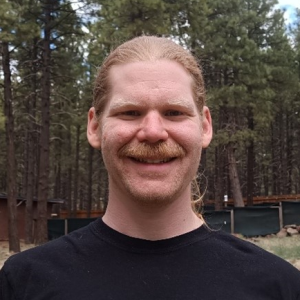 Jason Elliott Jason Elliott
Hydrogeologist
Arizona Department of Environmental Quality
Jason Elliott, a hydrogeologist at Arizona Department of Environmental Quality (ADEQ), is passionate about protecting water resources. With a background in environmental sciences from the University of Virginia, he initially focused on geologic mapping and surface water quality, followed by several years of mining and environmental consulting experience before joining ADEQ. Jason’s dedication stems from a childhood immersed in outdoor activities, driving his mission to preserve and enhance the quality of water resources in the face of regional scarcity. Jason’s relocation to Arizona intensified his commitment to water conservation, inspired by the region’s unique challenges. His expertise now centers on remediating abandoned mine sites, aiming to protect and enhance Arizona’s surface water quality.
|
Session 2.3 C
Waste | Environmental Compliance Audits of Above Ground Storage Tanks and Northern Canada
12:30 – 1:00 PM
| About the Presentation |
|
The installation and operation of petroleum storage tanks and systems can be challenging in less than ideal locations. In many northern communities in Canada heating of buildings rely on fuel oil that is brought in and stored within large fuel storage tanks. These tanks, depending on the jurisdiction having authority (i.e., Federal, Provincial or Territorial), are required to be installed following the applicable legislation as well as conform to the associated CSA standards, the National Fire Code and CCME guidelines. These fuel storage tanks range in volume from less than 2,500 L to over 49,000 L, and include both external and internal tanks (i.e., day tanks). Failure to follow the requirements can result in serious spills or releases that impact the environment and/or human health. The majority of the tank systems are designed for the heating of buildings such as schools, health centres and health services. Siting and servicing of these tanks is challenging given the local conditions such as permafrost or rocky outcrops, which in turn creates circumstances where these tanks may be installed in contravention to the regulations. As an owner's due diligence, undertaking environmental compliance audits of the tank systems can assist in identifying instances of noncompliance and associated corrective actions. In the event that tanks need to be replaced or for new installations at similar properties, the audit records should be used to avoid common pitfalls during design and construction. Understanding the common non-conformance issues at these properties will assist in preparing the tender specifications and ensuring a qualified contractor is retained. The audit reports contain excellent insight as to the status of compliance related to regulatory requirements as well as identifying the challenges or constraints related to those regulatory requirements. This insight allows design teams, when developing design specifications, to ensure that the design specifications adhere to regulatory requirement, while considering the challenges encountered in northern climates. Ignoring audit findings, or not conducting a regulatory scan, puts the design teams at risk of overlooking potential non-conformance with regulatory requirements during design or construction.
|
| About the Speaker |
|
 Fiona Scurrah, Registered Professional Biologist (British Columbia), Professional Biologist (Alberta) Fiona Scurrah, Registered Professional Biologist (British Columbia), Professional Biologist (Alberta)
Senior Principal Environmental Scientist
WSP E&I Canada
Speaker Bio coming soon.
|
Session 2.4
Environmental Justice | State Solutions for Environmental Justice and Equity
11:30 – 1:00 PM
| About the Presentation |
|
At the federal level, there are numerous regulations and investments passed recently for environmental justice (EJ), equity, and climate change response. Several states are leading the nation in addressing EJ and equity at a state and local level. Join fellow NEPA practitioners as they share updates on the progress of some state land use and environmental justice laws, provide examples of equity strategies successes and failures, and trade tips on implementing and integrating state and local environmental justice laws with NEPA programs, laws, and policies. Panelists will seek audience participation to share experiences implementing their states' EJ and equity programs, laws, and policies. Learn the latest status of federal environmental justice Executive Orders, NEPA EJ guidance, and Justice40 qualifications for Bipartisan Infrastructure Law grants. Contrast federal programs and policies with state solutions.
Attendees will learn an overview of several western states' environmental justice laws and equity policies including:
- CA SB 922 streamlines CEQA for sustainable transportation projects if they meet a business case and racial equity and displacement analysis
- OR Department of Land Conservation & Development,
- Climate-Friendly and Equitable Communities Program to achieve state goals for reducing transportation pollution
- OR HB 4077 (updates the 2008 EJ law) by renaming/reinvigorating the EJ Council and developing a state EJ mapping tool
- WA Healthy Environmental for All (HEAL) Act that brings extensive engagement and EJ assessments to every covered state agency
|
| About the Moderator |
|
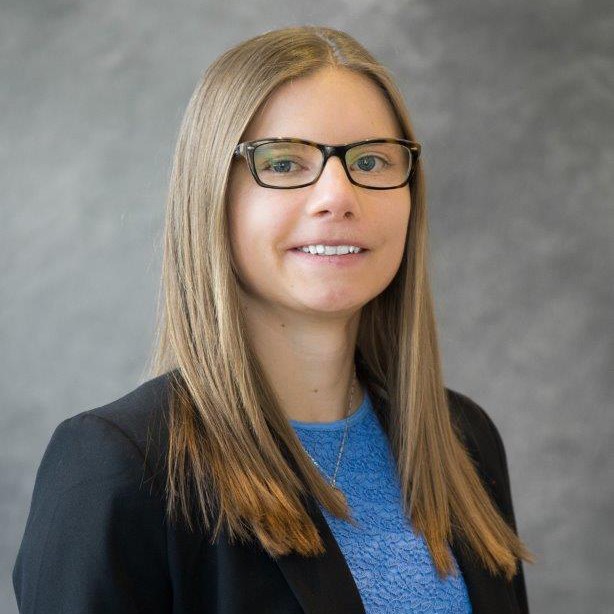 Emily Gulick Emily Gulick
Environmental Planner/Scientist
Jacobs
Emily Gulick (she/her) is an Environmental Planner/Scientist at Jacobs. She specializes in implementing National Environmental Policy Act (NEPA) including writing and preparing EISs and EAs for federal agencies such as NASA, DoD, and NSF. She also has experience in California Environmental Quality Act (CEQA), working on transportation- and infrastructure-related projects. Emily currently leads the NAEP EJ Working Group Lead.
|
|
About the Speakers
|
|
 Chris Whitehead Chris Whitehead
Senior Environmental Justice Consultant
Worley Consulting
Chris Whitehead has been an air quality specialist for nearly 20 years. His recent work has focused on environmental justice policies, climate impacts, risk analysis, renewables development and cumulative impacts assessment. Environmental justice work has become his passion as he strives to bring stakeholders to the table and objectively untangle the many nuanced impacts that have piled up to affect the health of people in overburdened communities. Chris holds a Master of Science in environmental policy and management from American Public University and a sustainability management certificate from Massachusetts Institute of Technology. His most recent work centers on a cumulative impacts model that he developed in southern New Jersey and Philadelphia.
|
|
 Kimberly Wetzel, AICP Kimberly Wetzel, AICP
Senior Environmental Planner
Jacobs
Kim Wetzel (she/her) is an environmental and land use planner based in the Jacobs Portland, Oregon office with 20 years of experience in environmental planning, environmental justice, and public engagement for a wide range of infrastructure projects throughout the West and Alaska. She currently serves on the board of the National Association of Environmental Professionals (NAEP), Northwest AEP, and the City of Hillsboro Planning & Zoning Hearings Board.
|
|
 Hoang-Van Nguyen Hoang-Van Nguyen
Environmental Justice Council Coordinator
State of Oregon Environmental Justice Council
Hoang-Van Nguyen (she/her) is the Policy Coordinator for the State of Oregon Environmental Justice Council. Long-time public worker in CA and OR. Hoang-Van focuses on the innovation, improvement, and independence of the worldwide Environmental Justice Movement. Hoang-Van worked many years in the public sector in California and Oregon. She is experienced in community and whole-worker organizing, political advocacy, and meaningful stakeholder involvement.
|
Back to Top
Back to Schedule
|